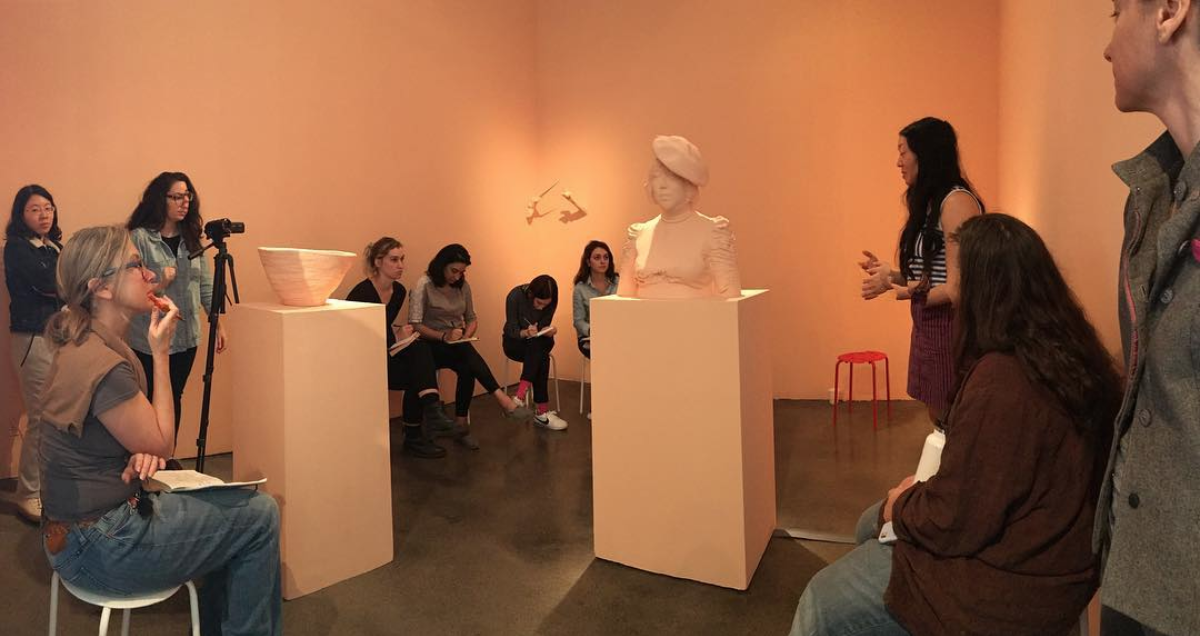
Of the Unicorn (and the Sundowner Kids)
In collaboration with Portland Museum of Modern Art (PMOMA), Museum of Contemporary Art Santa Barbara (MCASB) presents Midori Hirose’s first solo museum exhibition, Midori Hirose: Of The Unicorn (and the Sundowner Kids). The room-sized installation of newly-commissioned sculptures traces her explorations into the mythologies, historical accounts, ecologies, and communities of Santa Barbara, CA which unfolded from a series of conversations and excursions with Santa Barbara residents over the course of Hirose’s multiple visits to the area. Meetings with an anthropologist and ethnobiologist at the Santa Barbara Museum of Natural History, a botanist, a fireman, a Chumash elder, a motel manager, and several artists, combined with Hirose’s more abstract sensory impressions of the landscape, inform her conceptualization of various objects in the exhibition. Together the work offers timely narratives about this city, touching on issues including immigration, indigenous reality, and climate change.
Hirose, a multidisciplinary artist based in Portland, OR, often creates projects that engage lesser-known personal and collective stories as points of departure for addressing broader social topics. Her simultaneously focused and open-ended inquiries into certain topics of interest are born out of a diverse range of encounters that reveal fundamentally significant yet often overlooked or misconstrued aspects of a place or situation. Hirose refers to these as the “never not heres.” For this exhibition she asks, “What exists in Santa Barbara that holds it up—makes it unique—but also is somehow camouflaged by the everyday? What are the magic qualities of this city that are never not here?”
https://www.mcasantabarbara.org/?exhibition=midori-hirose-of-the-unicorn-and-the-sundowner-kids
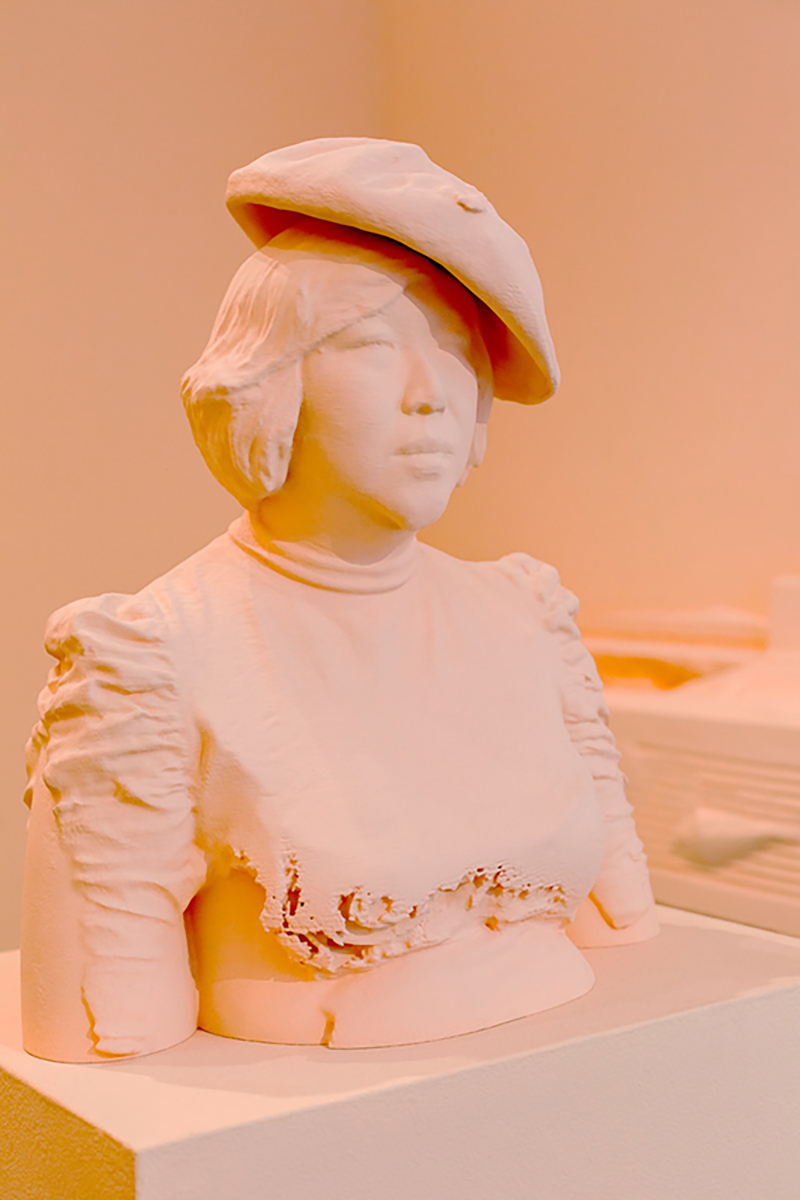
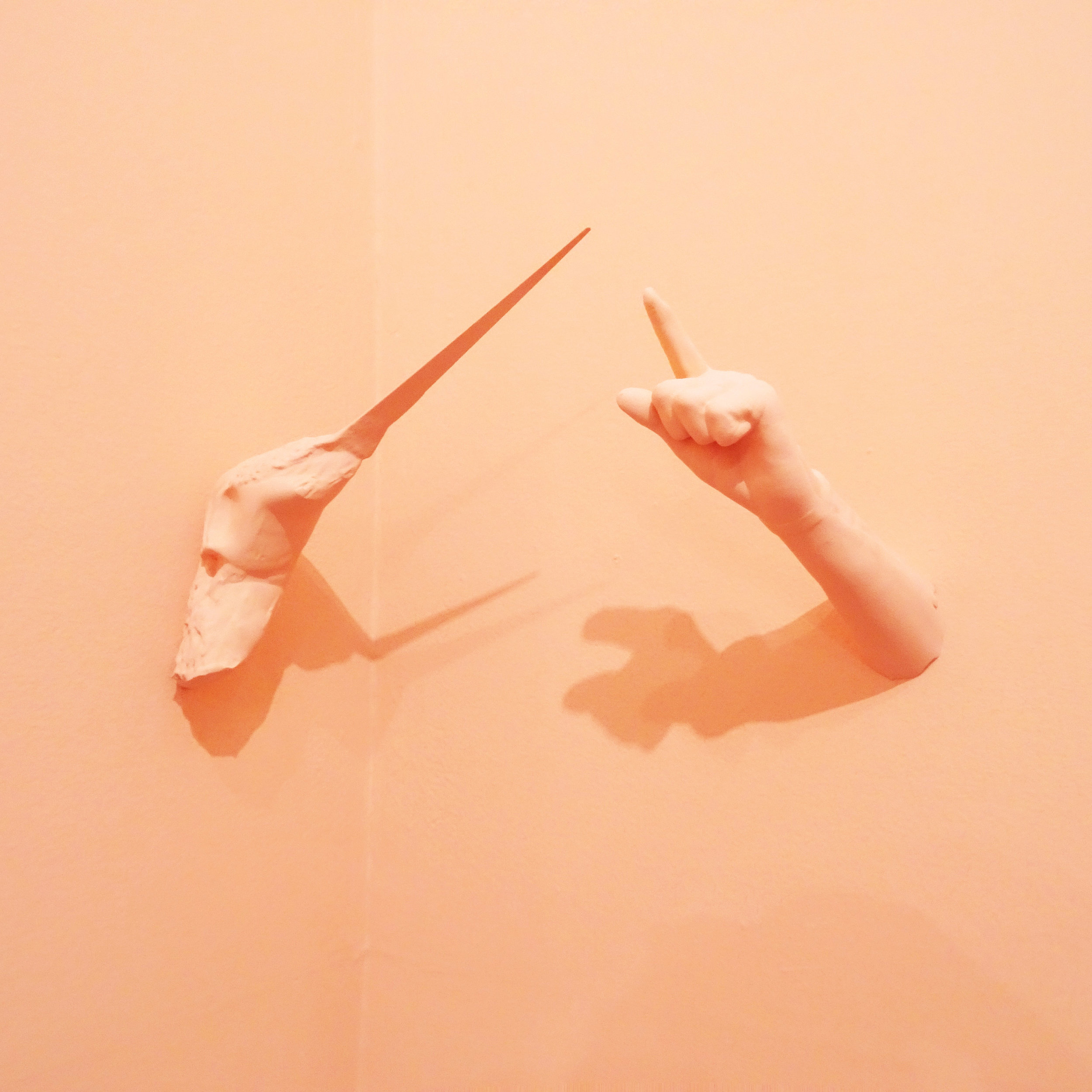
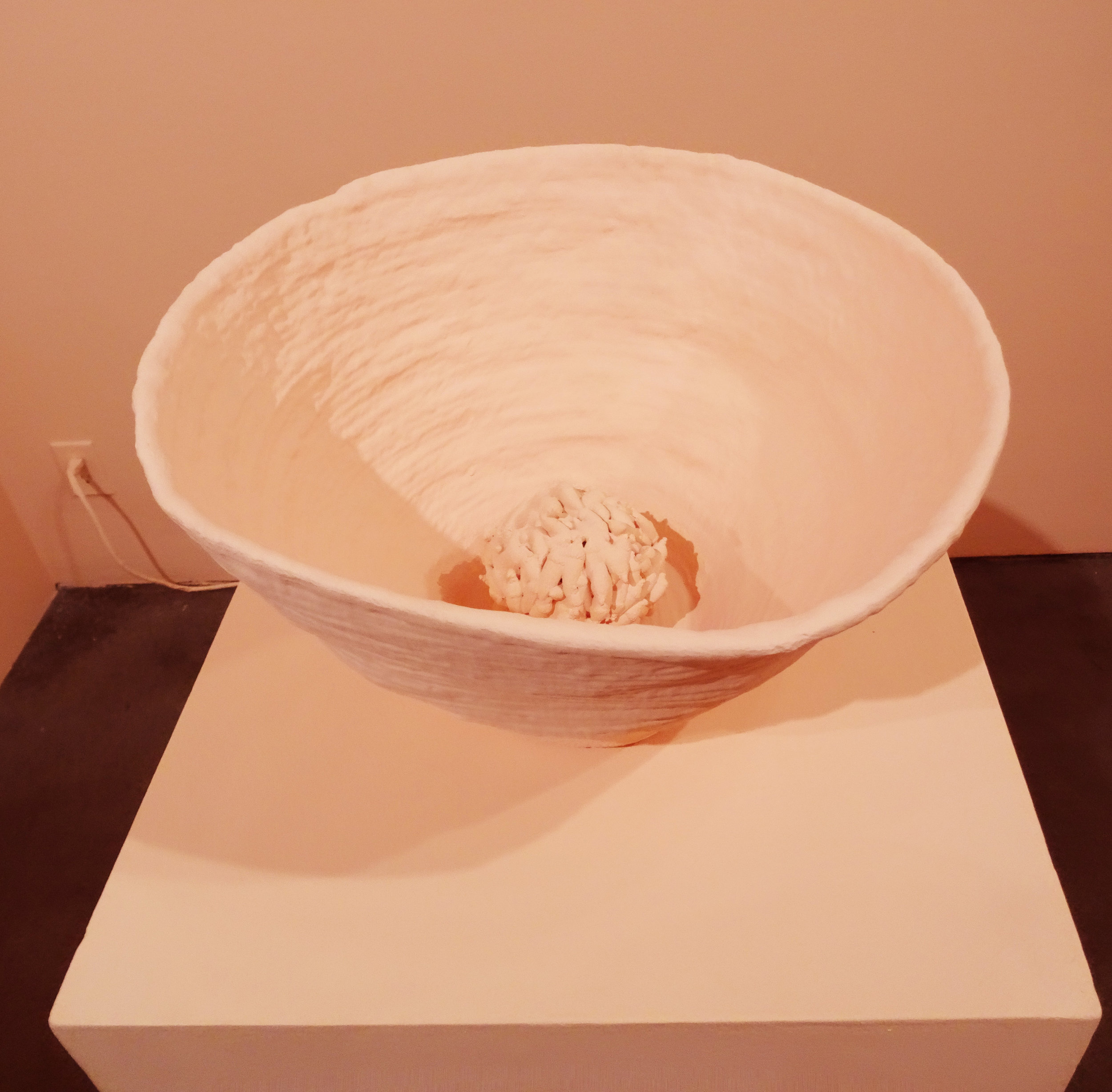
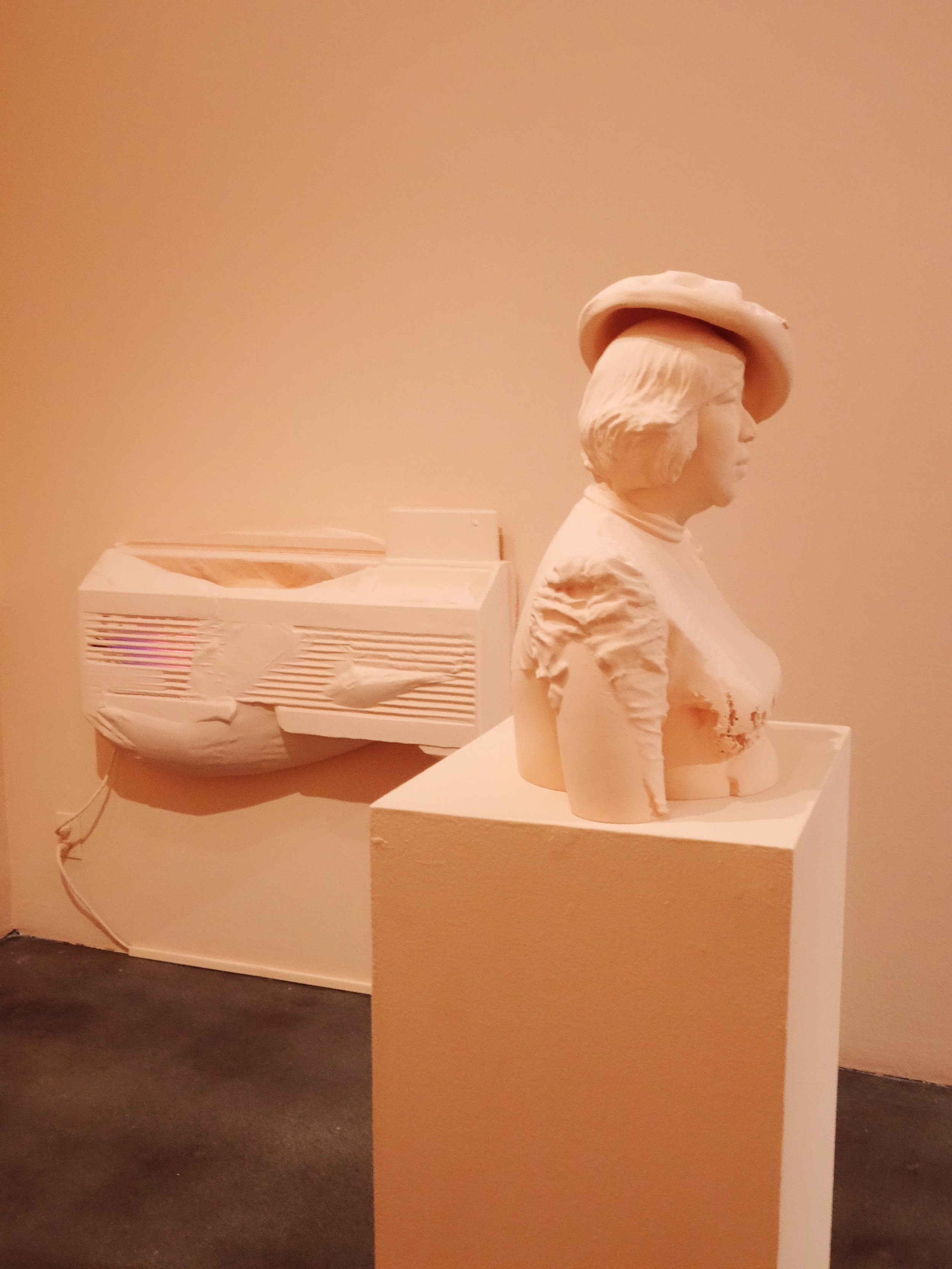
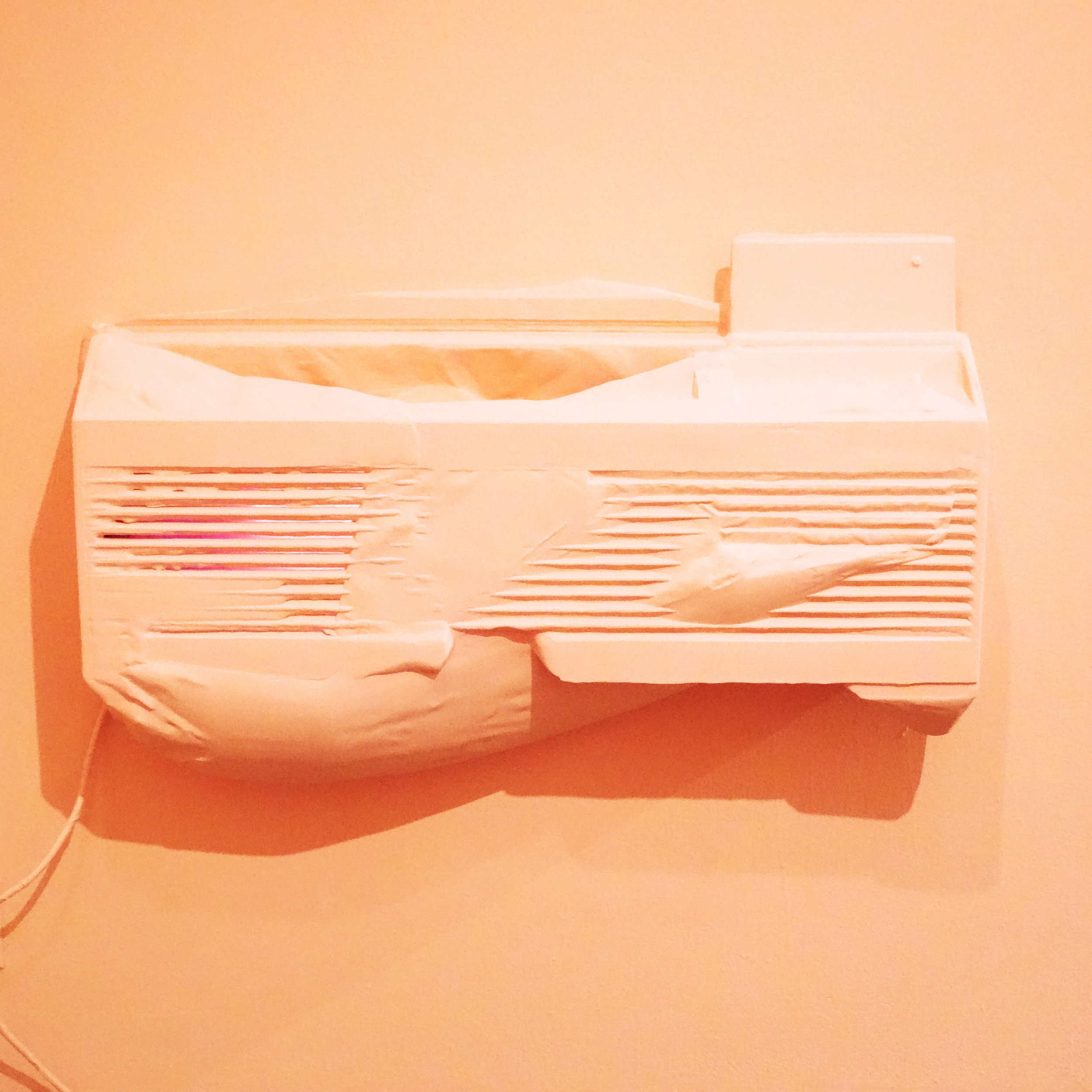


Of the Unicorn (and the Sundowner Kids), partial installation footage, 2017.
Of the Unicorn (and the Sundowner Kids). The installation’s sherbet color is inspired by the Santa Barbara sunset, flattened to one dimension, exposing the “Never Not Here.” The project engages personal and collective stories. Inquiries are meant to reveal significant yet often overlooked aspects of our world.
Since antiquity, the legend of the unicorn lives on. The famed creature of assorted powers has taken many twists and turns, spanning centuries and continents. It has elusively flitted about religious, scientific, political, and cultural realms, associated with myriad beliefs and values. According to accumulated lore, antidotal properties were attributed to the unicorn’s horn; sightings of the unicorn have prevented wars; its presence in court cases has determined guilt or innocence. Enthrallment with unicorns persists today, drawing a multitude of old and new associations, visually represented in film and television, fashion trends, the tech industry, and works of art. Midori Hirose is fascinated by this storied animal’s perpetual vibrancy—how a magical being, apparently quite rarely if ever actually seen, nonetheless endlessly and so vastly intrigues the human imagination. During our early conversations about her exhibition at Museum of Contemporary Art Santa Barbara (MCASB), Hirose’s mind was on the unicorn—as an allegory of a past that continuously disappears and reappears in varying formations, is reconstructed and reinvented, questioned, and contested, depending on who is telling the story, all the while remaining a vital part of our present. Hirose, a multidisciplinary artist based in Portland, OR, considers her broader practice “a meditation on the theme Never Not Here.” Her work often revolves around ever-present unseen or undervalued aspects of our world, whether mystical or not, that possess a remarkable power or inspire wonder. In past works, she has experimented with various materials such as wood, acrylics, and sand, to observe the transmutational shifts of basic things into those more precious, and the elements of surprise or mystery that may be revealed along the way, which are sometimes not visible to the naked eye. In others, she incorporates hidden details to generate playful moments of discovery, requiring viewers to physically rotate or bend their bodies around the works, or wait a little longer until something unexpected happens. In her more recent site-specific installations, similar to those created for this exhibition, Hirose seeks out unnoticed or obscured meaning in the everyday, by delving into the microcosms or substratum of communities. With utmost openness, the artist immerses herself in a new place, perceiving its essence through readings, walks, chats, attending events, meeting local artists, and also taking in the area’s colors, weather, smells, and flavors. Simultaneously focused and open-ended inquiries produce a diverse range of encounters and impressions, offering Hirose lesser-known personal and collective stories as points of departure for addressing broader social topics, and revealing significant yet often underrecognized aspects of a place or situation.
Hirose’s works of art in the exhibition comprise a kind of walking tour of her fantastic journey into a new place—the city of Santa Barbara, CA—from the position of an outsider with the poetic language of an artist, presenting what she considers some of the city’s more noteworthy monuments. The room-sized installation of her four newly commissioned sculptures trace the artist’s explorations into the mythologies, historical accounts, ecologies, and communities of Santa Barbara. She asks, “What exists in Santa Barbara that holds it up—makes it unique—but also is somehow camouflaged by the everyday? What are the magic qualities of this city that are never not here?” The works on view emerge from a series of conversations and excursions with Santa Barbara residents over the course of Hirose’s visits to the area. Meetings with an anthropologist and ethnobiologist at the Santa Barbara Museum of Natural History, a botanist, a fire department employee, a Chumash elder, a motel manager, and several artists, combined with Hirose’s more abstract sensory impressions of the landscape, inform her conceptualization of various objects in the exhibition. Together, the work offers timely narratives about this city, touching on issues such as immigration, indigenous reality, and climate change. Entering Hirose’s temporary parallel universe of the city at sunset, we are reminded that despite the constant changes over time occurring in our environment, as the lighting shifts and the seasons change, a magic always remains. - Brooke Kellaway